


The Chardham Yatra is a spiritual journey that takes pilgrims through four holy shrines located in the state of Uttarakhand in northern India. These four shrines are Yamunotri, Gangotri, Kedarnath, and Badrinath, and together they form the Chardham Yatra.
The journey is considered very auspicious and is believed to provide spiritual salvation to those who undertake it. The Chardham Yatra typically begins in April/May and ends in October/November, considered the best months to visit these shrines.
The first shrine on the route is Yamunotri, which is dedicated to the goddess Yamuna. It is believed that taking a dip in the holy waters of Yamuna here can wash away one’s sins. The second shrine is Gangotri, which is dedicated to the river Ganga. It is believed that the river Ganga originated from the Gangotri glacier and that taking a dip in its waters can wash away one’s sins.
The third shrine is Kedarnath, which is dedicated to Lord Shiva. It is believed that this is the place where Lord Shiva absolved the Pandavas of their sins after the Mahabharata war. The fourth and final shrine is Badrinath, which is dedicated to Lord Vishnu. It is believed that a visit to Badrinath can grant spiritual enlightenment.
Undertaking the Chardham Yatra requires physical fitness and mental preparation as it involves a lot of travel on mountainous terrain. However, the journey is considered very rewarding and fulfilling for those who undertake it.
Yamunotri is a Hindu temple and pilgrimage site situated in the Uttarkashi district of the northern Indian state of Uttarakhand. It is one of the four shrines that constitute the Chardham Yatra and is dedicated to the goddess Yamuna. The temple is situated at an elevation of 3,293 meters above sea level and is surrounded by the Garhwal Himalayas.
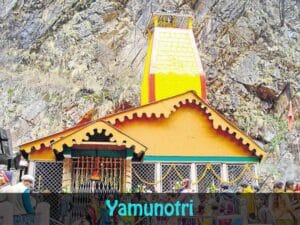
The Yamunotri temple is accessible by foot, and the trek to the temple is considered challenging due to the mountainous terrain. The trek begins from the town of Hanuman Chatti, which is about 14 kilometers from Yamunotri. Visitors can also hire horses or palanquins to reach the temple.
The temple is open to visitors from May to November, and the best time to visit is between May to June and September to November when the weather is pleasant. The temple attracts thousands of pilgrims every year who come to take a dip in the holy waters of the Yamuna and seek blessings from the goddess Yamuna.
Gangotri is a small town and a Hindu pilgrimage site located in the Uttarkashi district of the northern Indian state of Uttarakhand. It is situated at an elevation of 3,415 meters above sea level and is one of the four holy shrines that make up the Chardham Yatra. Gangotri is famous for its temple dedicated to the river Ganges, also known as the Ganga.
According to Hindu mythology, the river Ganges is believed to have originated from the Gangotri glacier, which is located about 19 kilometers from the town of Gangotri. The Gangotri temple is believed to have been built by the Gurkha general Amar Singh Thapa in the 18th century. 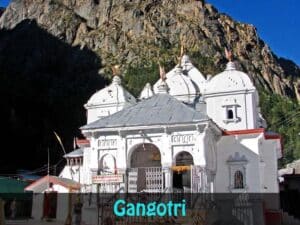
The Gangotri temple is accessible by road, and visitors can take a taxi or bus from Uttarkashi, about 100 kilometres from Gangotri. The temple is open to visitors from May to November, and the best time to visit is between May to June and September to November when the weather is pleasant.
The town of Gangotri is surrounded by snow-capped peaks and is known for its scenic beauty. Visitors can take a dip in the holy waters of the Bhagirathi and seek blessings from the goddess Ganga. The trek from Gangotri to the source of the river Ganges at the Gangotri glacier is considered challenging but is also popular among adventure enthusiasts.
Kedarnath is a town located in the Rudraprayag district of the northern Indian state of Uttarakhand. It is situated at an elevation of 3,584 meters above sea level and is one of the four holy shrines that make up the Chardham Yatra. Kedarnath is famous for its temple dedicated to Lord Shiva, known as the Kedarnath temple.
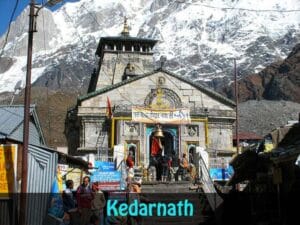
The temple is made of stone and is situated amidst the snow-capped peaks of the Himalayas. The temple’s main deity is a conical lingam, which is worshipped by thousands of pilgrims who visit the temple every year.
The Kedarnath temple is accessible by foot, and visitors have to trek about 14 kilometres from the town of Gaurikund to reach the temple. The trek is considered challenging due to the mountainous terrain, but it is also popular among adventure enthusiasts. Visitors can also hire horses or palanquins to reach the temple.
The town of Kedarnath is surrounded by the peaks of the Garhwal Himalayas and is known for its scenic beauty. The town is also the starting point for the trek to the Kedarnath Wildlife Sanctuary, which is home to several rare and endangered species of flora and fauna.
The Kedarnath temple is open to visitors from May to November, and the best time to visit is between May to June and September to November when the weather is pleasant. Visitors can take a dip in the holy waters of the Mandakini River and seek blessings from Lord Shiva at the Kedarnath temple.
Badrinath is a town located in the Chamoli district of the northern Indian state of Uttarakhand. It is situated at an elevation of 3,133 meters above sea level and is one of the four holy shrines that make up the Chardham Yatra. Badrinath is famous for its temple dedicated to Lord Vishnu, known as the Badrinath temple.
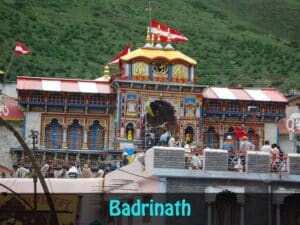
The temple’s main deity is a black stone idol of Lord Vishnu, which is worshipped by thousands of pilgrims who visit the temple every year. The temple also has idols of other deities like Lord Shiva, Goddess Lakshmi, and Lord Narasimha.
The Badrinath temple is accessible by road, and visitors can take a taxi or bus from the town of Rishikesh, which is about 300 kilometers from Badrinath. The temple is open to visitors from May to November, and the best time to visit is between May to June and September to November when the weather is pleasant.
The town of Badrinath is surrounded by snow-capped peaks and is known for its scenic beauty. Visitors can take a dip in the hot water springs at Tapt Kund, which is believed to have medicinal properties. The town is also the starting point for several treks to nearby peaks and glaciers.
Badrinath is also known for its annual Badrinath Kedarnath Yatra, which is considered to be one of the most sacred pilgrimages for Hindus. During this yatra, thousands of pilgrims visit both the Badrinath and Kedarnath temples to seek blessings from Lord Vishnu and Lord Shiva, respectively.
Chardham package from Haridwar
There are several tour operators and travel agencies in Haridwar that offer Chardham Yatra packages. The package usually includes transportation, accommodation, meals, and sightseeing. The cost of the package varies depending on the duration of the tour, the type of accommodation, and the facilities included.
Here is an example of a typical Chardham Yatra package from Haridwar:
Day 1: Haridwar to Barkot


Day 2: Barkot to Yamunotri and back
Day 4: Uttarkashi to Gangotri and back
Day 5: Uttarkashi to Guptkashi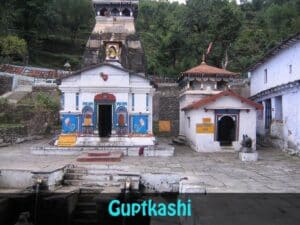
Day 6: Guptkashi to Kedarnath and back
Day 8: Badrinath to Haridwar
Note: The itinerary mentioned above is just an example, and it can be customized according to your preferences and requirements.
Barkot
Barkot is a small town located in the Uttarkashi district of the northern Indian state of Uttarakhand. It is situated at an altitude of 1,220 meters above sea level and is known for its scenic beauty and religious significance. It is a popular destination for tourists who are visiting the nearby Yamunotri temple, which is one of the four shrines that make up the Chardham Yatra.
Barkot is surrounded by snow-capped mountains and dense forests, and the river Yamuna flows through the town. The town is known for its apple orchards, and visitors can enjoy freshly picked apples and apple juice.
Apart from the Yamunotri temple, several other attractions in and around Barkot are worth visiting. These include:
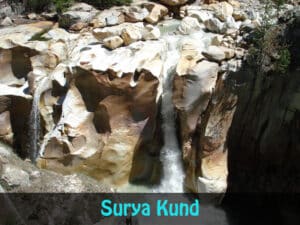
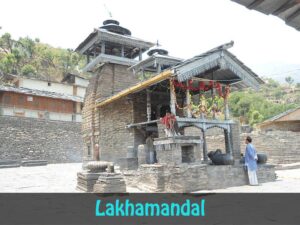
Barkot is well connected by road, and visitors can take a taxi or bus from the nearby towns of Dehradun or Rishikesh. The best time to visit Barkot is from April to June and September to November when the weather is pleasant.
Mussoorie
Mussoorie is a popular hill station located in the northern Indian state of Uttarakhand. It is situated at an altitude of 2,005 meters above sea level and is known for its scenic beauty, pleasant weather, and colonial charm. Mussoorie is also known as the “Queen of Hills” and is a popular destination for tourists from all over India and abroad.
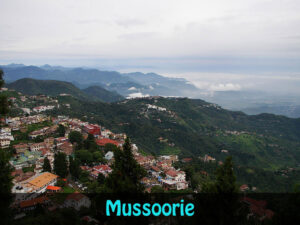 Mussoorie offers stunning views of the Himalayan ranges and is surrounded by dense forests, which makes it a popular destination for nature lovers and adventure enthusiasts. The town has several attractions that are worth visiting, including:
Mussoorie offers stunning views of the Himalayan ranges and is surrounded by dense forests, which makes it a popular destination for nature lovers and adventure enthusiasts. The town has several attractions that are worth visiting, including:
Mussoorie is well connected by road, and visitors can take a taxi or bus from the nearby towns of Dehradun or Rishikesh. The best time to visit Mussoorie is from March to June and September to November when the weather is pleasant.
Kempty Falls
Kempty Falls is a popular waterfall located in the northern Indian state of Uttarakhand, about 13 kilometres from the hill station of Mussoorie. It is situated at an altitude of 1,364 meters above sea level and is a popular destination for tourists visiting Mussoorie and the surrounding areas.
The waterfall is surrounded by lush greenery and offers a refreshing escape from the hustle and bustle of city life. The water cascades down from a height of about 40 feet and falls into a pool of water, where visitors can take a refreshing dip or go for a swim. There are also several small shops and stalls near the falls selling souvenirs, snacks, and drinks.
Kempty Falls can be reached by taking a taxi or bus from Mussoorie. Visitors can also take a cable car ride from Mall Road in Mussoorie to Gun Hill, from where they can enjoy panoramic views of the town and the surrounding mountains.
The best time to visit Kempty Falls is from March to June and September to December when the weather is pleasant. However, during the monsoon season, the water level at the falls rises significantly, and it can be dangerous to go for a swim or take a dip. Therefore, it is advisable to check the weather conditions before planning a visit to Kempty Falls.
Jankichatti
Jankichatti is a small town located in the Uttarkashi district of the northern Indian state of Uttarakhand. It is situated at an altitude of 2,650 meters above sea level and is a popular destination for tourists visiting the nearby Yamunotri temple, which is one of the four shrines that make up the Chardham Yatra.
Jankichatti is located about 7 kilometers from the Yamunotri temple, and it is the last motorable point before the trek to Yamunotri. Visitors can take a taxi or bus from the nearby town of Barkot to reach Jankichatti.
Apart from the Yamunotri temple, several other attractions in and around Jankichatti are worth visiting. These include:
Jankichatti is well connected by road, and visitors can take a taxi or bus from the nearby towns of Barkot or Dehradun. The best time to visit Jankichatti is from April to June and September to November when the weather is pleasant.
Uttarkashi
Uttarkashi is a town located in the northern Indian state of Uttarakhand. It is situated at an altitude of 1,165 meters above sea level and is known for its scenic beauty, ancient temples, and cultural heritage. The town is located on the banks of the Bhagirathi River, which is a tributary of the River Ganges.
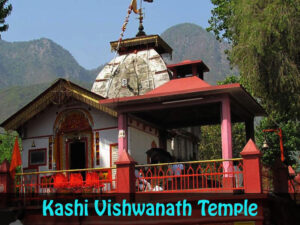 Uttarkashi is surrounded by beautiful mountains and is a popular destination for adventure enthusiasts and nature lovers. The town has several attractions that are worth visiting, including:
Uttarkashi is surrounded by beautiful mountains and is a popular destination for adventure enthusiasts and nature lovers. The town has several attractions that are worth visiting, including:
Uttarkashi is well connected by road, and visitors can take a taxi or bus from the nearby towns of Dehradun or Rishikesh. The best time to visit Uttarkashi is from March to June and September to November when the weather is pleasant.
Guptkashi
Guptkashi is a small town located in the northern Indian state of Uttarakhand. It is situated at an altitude of 1,319 meters above sea level and is known for its ancient temples and scenic beauty. The town is located on the way to Kedarnath, one of the four shrines that make up the Chardham Yatra.
Guptkashi is surrounded by beautiful mountains and is a popular destination for pilgrims and nature lovers. The town has several attractions that are worth visiting, including:
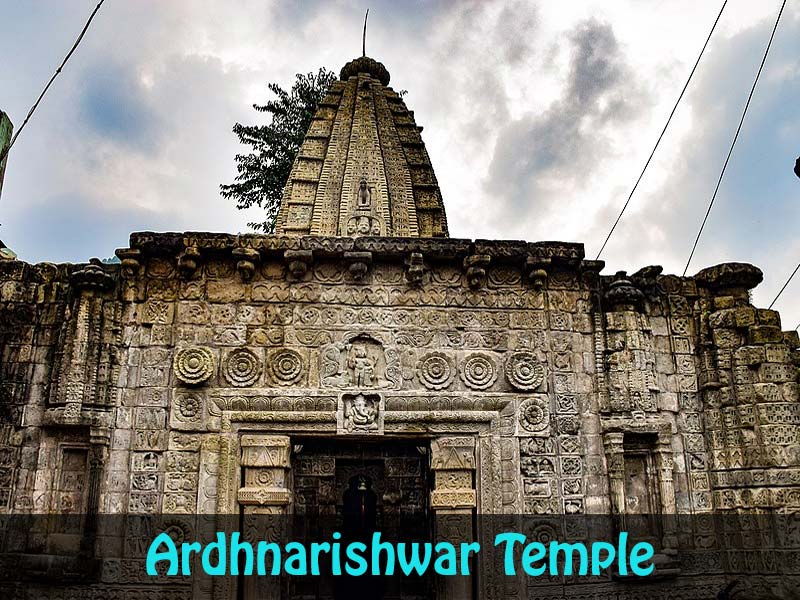
Guptkashi is well connected by road, and visitors can take a taxi or bus from the nearby towns of Rishikesh or Haridwar. The best time to visit Guptkashi is from April to June and September to November when the weather is pleasant.
Gaurikund
Gaurikund is a small town located in the northern Indian state of Uttarakhand. It is situated at an altitude of 1,982 meters above sea level and is known as the starting point of the trek to Kedarnath, one of the four shrines that make up the Chardham Yatra.
Gaurikund is surrounded by beautiful mountains and is a popular destination for pilgrims and nature lovers. The town has several attractions that are worth visiting, including:
Gaurikund is well connected by road, and visitors can take a taxi or bus from the nearby towns of Rishikesh or Haridwar. The best time to visit Gaurikund is from April to June and September to November when the weather is pleasant.
Joshimath
Joshimath is a small town located in the northern Indian state of Uttarakhand. It is situated at an altitude of 1,890 meters above sea level and is known as the winter seat of Lord Badri, one of the four shrines that make up the Chardham Yatra.
Joshimath is surrounded by beautiful mountains and is a popular destination for pilgrims and nature lovers. The town has several attractions that are worth visiting, including:
Joshimath is well connected by road, and visitors can take a taxi or bus from the nearby towns of Rishikesh or Haridwar. The best time to visit Joshimath is from April to June and September to November when the weather is pleasant.
The best time for Char Dham Yatra in Uttarakhand, India, is from April to June and from September to November. During this time, the weather is pleasant, and the temperature is moderate, making it ideal for pilgrims to undertake the yatra.
The summer months of April to June are the most popular time for Char Dham Yatra, as the weather is pleasant, and the snow has melted, making it easier to travel in the region. The temperature during this time ranges from 15°C to 30°C, which is comfortable for travelers.
The monsoon season in Uttarakhand starts in July and continues till August, and during this time, the region experiences heavy rainfall, making the roads and trekking trails dangerous and inaccessible. Therefore, it is not advisable to undertake the Char Dham Yatra during the monsoon season.
The autumn season from September to November is also a good time to undertake the Char Dham Yatra, as the weather is pleasant, and the crowds are comparatively less. The temperature during this time ranges from 10°C to 25°C, making it an ideal time for trekking and sightseeing.
It is advisable to check the weather conditions and the latest updates on the Char Dham Yatra before planning a trip and to carry appropriate clothing and gear according to the season.
Char Dham Yatra by car is a popular way to undertake the pilgrimage in Uttarakhand, India. Many travelers prefer this mode of transportation as it offers flexibility and convenience, allowing them to travel at their own pace and stop at various places along the way.
To undertake the Char Dham Yatra by car, you can either bring your car or hire a taxi or a car rental service. The starting point for the Char Dham Yatra by car is usually Haridwar, from where you can hire a car and drive to the different pilgrimage sites.
The roads leading to the Char Dham sites are well-maintained and offer scenic views of the mountains and the rivers. However, the roads can be narrow and winding in some places, and it is important to be cautious while driving and follow all traffic rules.
It is recommended to check the weather conditions and the road conditions before starting the journey and to carry appropriate clothing, gear, and medicines for emergencies. It is also important to plan the journey well in advance and to book accommodation and other facilities in advance, especially during peak season.
Overall, Char Dham Yatra by car can be a comfortable and convenient way to undertake the pilgrimage, allowing you to explore the region at your own pace and enjoy the scenic beauty of Uttarakhand.
Difference between Chota and bada Chardham yatra
Chota Char Dham Yatra and Bada Char Dham Yatra are two pilgrimage circuits in Uttarakhand, India, that are similar but cover different sets of temples.
The main difference between the two pilgrimage circuits is the number of temples covered. While the Chota Char Dham Yatra covers four temples, the Bada Char Dham Yatra covers twelve temples. The Bada Char Dham Yatra is considered to be a more comprehensive pilgrimage circuit and is undertaken by many devotees who have the time and resources to cover all the temples.
Both the Chota Char Dham Yatra and Bada Char Dham Yatra are considered to be very auspicious and are believed to offer spiritual benefits to the devotees who undertake them. However, the choice between the two circuits depends on the individual’s preferences, time, and resources.
Chardham Yatra sightseeing tour options
There are many sightseeing tour options available during the Char Dham Yatra in Uttarakhand, India. Here are some of the popular ones:
** These are some of the popular sightseeing tour options available during the Char Dham Yatra in Uttarakhand.
Do and don’t for Chardham Yatra
Here are some general do’s and don’ts to keep in mind during your Char Dham Yatra:
Do’s:
Don’ts:
These are some general do’s and don’ts that you should keep in mind during your Char Dham Yatra. It is always advisable to be mindful of your surroundings, respect the local customs, and take necessary precautions to ensure a safe and enjoyable journey.
Chardham yatra route
The Char Dham Yatra usually starts and ends in Haridwar or Rishikesh, and the four pilgrimage sites are located in the following order:
After visiting Badrinath, you can return to Haridwar or Rishikesh via the same route. The entire Char Dham Yatra usually takes around 10-12 days, depending on your travel plans and preferences.
What is unique in Chardham yatra from Haridwar?
The Char Dham Yatra from Haridwar is a unique and spiritual journey that takes you through Uttarakhand’s most beautiful and scenic parts. Here are some unique features of the Char Dham Yatra from Haridwar:
These are some of the unique features of the Char Dham Yatra from Haridwar that make it a special and memorable journey for pilgrims.
What are the options to do the Chardham yatra in June month?
The Char Dham Yatra in June can be challenging due to the monsoon season and the possibility of landslides, but it is still possible to undertake the journey. Here are some options for doing the Char Dham Yatra in June:
Group tours are a popular option for the Char Dham Yatra, especially during the peak season. Many tour operators offer group tours that include transportation, accommodation, and meals, making it a convenient option for those who want a hassle-free journey.
It’s essential to keep in mind that traveling during the monsoon season can be unpredictable, and it’s important to check the weather and road conditions before embarking on the journey. It’s also advisable to carry appropriate clothing, gear, and medication to prepare for any situation.
Chardham yatra with Rishikesh
A Chardham Yatra combined with a visit to Rishikesh is a popular itinerary for pilgrims who want to explore more of the spiritual and scenic attractions of Uttarakhand. Rishikesh, also known as the “Yoga Capital of the World,” is a holy city situated on the banks of the river Ganges and is known for its ancient temples, ashrams, and yoga centers. Here’s what you can expect on a Chardham Yatra with Rishikesh:
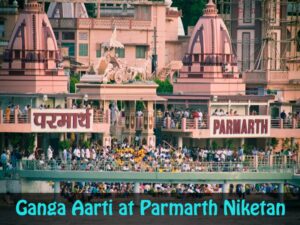
A Chardham Yatra with Rishikesh allows you to combine the spiritual aspects of the pilgrimage with the cultural and natural attractions of the region, making it a comprehensive and memorable journey.
For more information visit:- Char Dham yatra package from Kolkata, Char Dham tour itinerary from Haridwar, Chardham package from Haridwar 2024, Do Dham Yatra Tour Package, Low-cost Chardham Yatra packages, Chardham Yatra Haridwar package, Chardham Yatra Package, Ek Dham Yatra package, Do Dham Yatra 2024 Package From Haridwar, Teen Dham Yatra 2024 Tour Package, Kedarnath Dham Yatra.
for details, you always can visit our website:- Badrinath Auli tour packages, Kedarnath temple tour packages, Gangotri temple tour packages, Yamunotri tour packages.
Best deal for car rental service in Haridwar:- Budget taxi rental for chardham yatra, Haridwar Car Service.